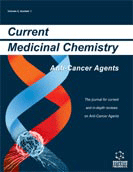Abstract
DNA helicases have essential roles in nucleic acid metabolism by facilitating cellular processes including replication, recombination, DNA repair, and transcription. The vital roles of helicases in these pathways are reflected by their emerging importance in the maintenance of genomic stability. Recently, a number of human diseases with cancer predisposition have been shown to be genetically linked to a specific helicase defect. This has led researchers to further investigate the roles of helicases in cancer biology, and to study the efficacy of targeting human DNA helicases for anticancer drug treatment. Helicase-specific inhibition in malignant cells may compromise the high proliferation rates of cancerous tissues. The role of RecQ helicases in response to replicational stress suggests a molecular target for selectively eliminating malignant tumor cells by a cancer chemotherapeutic agent. Alternate DNA secondary structures such as Gquadruplexes that may form in regulatory regions of oncogenes or G-rich telomere sequences are potential targets for cancer therapy since these sequence-specific structures are proposed to affect gene expression and telomerase activation, respectively. Small molecule inhibitors of G-quadruplex helicases may be used to regulate cell cycle progression by modulating promotor activation or disrupting telomere maintenance, important processes of cellular transformation. The design of small molecules which deter helicase function at telomeres may provide a molecular target since telomerase activity is necessary for the proliferation of numerous immortal cells. Although evidence suggests that helicases are specifically inhibited by certain DNA binding compounds, another area of promise in anti-cancer therapy is siRNA technology. Specific knockdown of helicase expression can be utilized as a means to sensitize oncogenic proliferating cell lines. This review will address these topics in detail and summarize the current avenues of research in anti-cancer therapy targeting helicases through small molecule inhibitors of DNA-protein complexes, DNA binding drugs, or down-regulation of helicase gene expression.
Keywords: helicase, anti-cancer drug, chemotherapy, tetraplex, minor groove, telomere, recq
 3
3

















